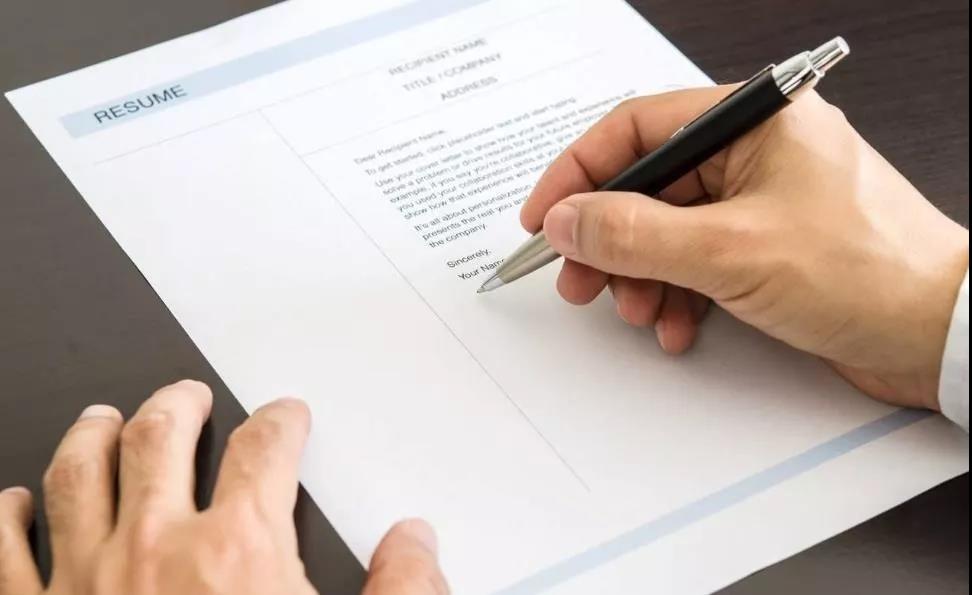复习初一英语知识点第1篇现在分词当我们说某人正在做什么事时,动词要使用分词形式,不能用原形,构成如下:一)一般在后加ing。如:spell-spelling,sing-singing,see-seei下面是小编为大家整理的复习初一英语知识点7篇,供大家参考。

复习初一英语知识点 第1篇
现在分词
当我们说某人正在做什么事时,动词要使用分词形式,不能用原形,构成如下:
一) 一般在后加ing。
如:spell-spelling, sing-singing, see-seeing, train-training, play-playing, hurry-hurrying, watch-watching, go-going, do-doing
二) 以不发音e的结尾的去掉e再加ing。
如:dance-dancing,
wake-waking(叫醒、醒来),
take-taking(拿、取、接收),
practice ["pr?ktis实习、练习] -practicing,
write-writing, have-having
三) 以重读闭音节结尾且一个元音字母加一个辅音字母
要双写最后的辅音字母再加ing。
如:put-putting, run-running,
get-getting, let-letting, begin-beginning
注意:要除开字母组合如show –showing, draw-drawing)
四) 以ie结尾的变ie为y再加ing。
如:tie-tying系(系领结) die-dying死 lie-lying 位于
复习初一英语知识点 第2篇
How do you get to school?
◆短语归纳
get to school 到达学校
take the subway 乘地铁
ride a bike 骑自行车
how far 多远
from home to school 从家到学校
every day 每天
take the bus 乘公共汽车
by bike 骑自行车
bus stop 公共汽车站
think of 认为
between…and… 在…和…之间
one 11-year-old boy 一个11岁的男孩
play with… 和…玩
come true 实现
have to 不得不
◆用法集萃
take…to…= go to…by… 乘…去…
How do/does sb get to…? 某人是怎样到…的?
How far is it from…to…? 从…到…有多远?
It takes some time to do 做某事花费某人多长时间。
How long does it take to do …花费多长时间?
It is + + to do 做某事是…
Thanks for + 感谢你(做)某事。
◆典句必背
—How do you get to school? 你怎么去上学?
—I ride my 我骑自行车。
How far is it from your home to school? 从你家到学校有多远?
How long does it take you to get to school? 去上学花费你多久?
For many students, it is easy to get to 对很多学生来说,很容易到达学校。
There is a very big river between their school and the 在他们学校和村庄之间有一条很大的河流。
◆话题写作
主题:上学的交通方式
写作思路:②开篇点题:点出自己的出行方式;②具体内容:自己选择这种交通方式的原因;③结束语: 表明自己的观点。
The Best Way for Me to Go to School
Different students go to school in different ways in our school, but I llike to go to school on
First, I live near the school, so my home is not far from my And it takes me a few minutes to get Second, there is a crossing on my way to school, and sometimes the traffic is very I think it is safer to go to school on Third, I think walking is good for my It’s a kind of sport and it makes me study
So in my opinion, the best way to go to school is on What about you?
复习初一英语知识点 第3篇
Why do you like pandas?
◆短语归纳
kind of 有几分,有点儿
be from/come from 来自于
South Africa 南非
all day 整天
for a long time 很长时间
get lost 迷路
places with food and water 有食物和水的地方
cut down 砍倒
in (great) danger 处于(极大)危险之中
twelve years old 十二岁
things made of ivory 由象牙制成的东西
◆用法集萃
—Why…? 为什么……?
—Because… 因为……
let do 让某人做某事
want to do 想要做某事
one of+名词复数 ……之一
forget to do 忘记要做某事
forget doing 忘记做过某事
help (to) do 帮助某人做某事
be friendly to 对某人友好
◆典句必背
—Why do you like pandas? 你为什么喜欢熊猫?
—Because they’re kind of 因为它们有点儿有趣。
—Why does John like koalas? 约翰为什么喜欢树袋熊?
—Because they’re very 因为它们非常可爱。
—Why don’t you like tigers? 你为什么不喜欢老虎?
—Because they’re really 因为它们真的吓人。
—Where are lions from? 狮子来自哪里?
—They’re from South 它们来自南非。
Elephants can walk for a long time and never get 大象能走很长时间并且从不迷路。
They can also remember places with food and 它们也能记住有食物和水的地方。
But elephants are in great 但是,大象处于极大危险之中。
People cut down many trees so elephants are losing their
人们砍倒了许多树,因此,大象渐渐失去它们的家园。
Today there are only about 3,000 elephants (over 100,000 before)
现在仅有大约3000头大象(之前超过10万头大象)。
’t she beautiful? 她难道不美丽吗?
◆话题写作
主题:介绍自己喜欢的动物
The Animal I Like
There are many kinds of animals in the What animal do I like? Let’s know
Many people like her very I also like She is from She is very She doesn’t eat grass and meat at She eats bamboo every She is so She is black and She has two big black ears and And she also has black legs and
What animal is she? She is a I like panda very Do you like her? What animal do you like?
复习初一英语知识点 第4篇
Don’t eat in
◆短语归纳
on time 准时,按时
listen to… 听……
in class 在课上
be late for 做……迟到
have to 不得不
be quiet 安静
go out 外出
do the dishes 清洗餐具
make breakfast 做早饭
make (one’s) bed 铺床
be noisy 吵闹
keep one’s hair short 留短发
play with 和某人一起玩
play the piano 弹钢琴
have fun 玩得高兴
make rules 制订规则
◆用法集萃
Don’t + 动词原形+其他。
不要做某事。
help (to) do 帮助某人做某事
too many + 可数名词复数 太多的……
practice doing 练习做某事
be strict with 对某人要求严格
be strict in 对某事要求严格
leave sth 把某物落在某地
keep+宾语+形容词 使……保持某种状态
learn to do 学会做某事
have to do 不得不做某事
◆典句必背
Don’t arrive late for 上课不要迟到。
Can we bring music players to school? 我们可以带音乐播放器到学校吗?
And we always have to wear the school 并且我们总是不得不穿校服。
There are too many rules! 有太多的规则!
Don’t leave the dirty dishes in the kitchen! 不要把脏盘子留在厨房里!
I have to keep my hair 我不得不留短发。
◆话题写作
主题:规则
Dear Tom,
Thanks for your last You want to know the rules in our Now let me tell you about
We can’t arrive late for We can’t talk loudly in We should keep When we meet our teachers on our way, we should say hello to We can’t eat or drink in class, and we can’t listen to music or play games in
I think we have too many What about yours? Please write and tell
Yours,
Li Ming
复习初一英语知识点 第5篇
What time do you go to school?
◆短语归纳
what time 几点
go to school 去上学
get up 起床
take a shower 洗淋浴
brush teeth 刷牙
get to 到达
do homework 做家庭作业
go to work 去上班
go home 回家
eat breakfast 吃早饭
get dressed 穿上衣服
get home 到家
either…or… 要么…要么…
go to bed 上床睡觉
in the morning/afternoon/evening 在上午/下午/晚上
take a walk 散步
lots of=a lot of 许多,大量
radio station 广播电台
at night 在晚上
be late for=arrive late for 迟到
◆用法集萃
at + 具体时间点 在几点(几分)
eat breakfast/lunch/dinner 吃早饭/午饭/晚饭
thirty/half past +基数词 …点半
fifteen/a quarter to +基数词 差一刻到…点
take a/an+名词 从事…活动
from…to… 从…到…
need to do sth 需要做某事
◆典句必背
—What time do you usually get up? 你通常几点钟起床?
—I usually get up at six 我通常6:30起床。
That’s a funny time for 那是个有趣的早餐时间。
—When do students usually eat dinner? 学生们通常什么时候吃完饭?
—They usually eat dinner at a quarter to seven in the 他们通常在晚上6:45吃晚饭。
In the evening, I either watch TV or play computer
在晚上,我要么看电视,要么玩电脑游戏。
At twelve, she eats lots of fruit and vegetables for
在十二点,她午餐吃很多水果和蔬菜。
She knows it’s not good for her, but it tastes 她知道它对她没好处,但是尝起来很好。
Here are your 这是你的衣服。
◆话题写作
主题:谈论日常作息习惯
My School Day
I am a I usually get up at seven, and I eat breakfast at seven Then I go to school at School starts at eight I eat lunch at I go home at I often eat dinner at 19:00 and then play the I do my homework at At 22:00, I go to
复习初一英语知识点 第6篇
Can you play the guitar?
◆短语归纳
play chess 下国际象棋
play the guitar 弹吉他
speak English 说英语
English club 英语俱乐部
talk to 跟…说
play the violin 拉小提琴
play the piano 弹钢琴
play the drums 敲鼓
make friends 结交朋友
do kung fu 练 (中国) 功夫
tell stories 讲故事
play games 做游戏
on the weekend/on weekends 在周末
◆用法集萃
play +棋类/球类 下…棋/打…球
play the +西洋乐器 弹/拉…乐器
be good at doing do well in doing 擅长做某事
be good with 和某人相处地好
need to do 需要某人做某事
can + 动词原形 能/会做某事
a little + 不可数名词 一点儿…
join the…club 加入…俱乐部
like to do =love to do 喜欢/喜爱做某事
◆典句必背
—Can you draw? 你会画画吗?
—Yes, I , I can’ 是的,我会。/不,我不会。
—What club do you want to join? 你想加入哪个俱乐部?
—I want to join the chess 我想加入国际象棋俱乐部。
You can join the English 你可以加入英语俱乐部。
Sounds sounds 听上去很好。
I can speak English and I can also play 我会说英语也会踢足球。
Please call Miller at 请给米勒夫人拨打电话555-3721。
◆话题写作
主题:介绍自己特长/强项
Dear Sir,
I want to join your organization (组织) to help kids with
sports, music and
My name is I am 15 years I"m a student in 1 Middle I can play the guitar I can sing many I can swim and speak English well, I think I can be good with the I also do well in telling
I hope to get your letter
Yours,
Mike
复习初一英语知识点 第7篇
一. 动词be(am,is,are)的用法:
be动词包括“am”, “is”, “are”三种形式。
①第一人称单数(I)配合am来用。句型解析析:I am+…
例句:I am
I am ten years
I am a
I am a
②第二人称(You)配合are使用。句型解析:You are+…
例句:You are my good
You are a good
You are beautiful
③第三人称单数(He or She or It)配合is使用。句型解析:She(He, It) is +……
例句:She is a good
She is so
She is
④人称复数 (we /you/they)配合are使用。句型解析:We (You, They) are +……
例句We are in Class 5,Grade
They are my
You are good
用法口诀:
我(I)用am, 你(you)用are,is跟着他(he),她(she),它(it)。单数名词用is,复数名词全用are。变否定,更容易,be后not加上去。变疑问,往前提,句末问号莫丢弃。还有一条须注意,句首大写莫忘记。
对应练习:
一. 用括号中适当的词填空。
I ________(am, are, is) from
She _______ (am, are, is) a
Jane and Tom _________(am, is, are) my
My parents _______ (am, is, are) very busy every
_______ (Are, Is, Do, Does) there a Chinese school in New York?
_______ (Be, Are, Were, Was) they excited when he heard the news?
There _____ (be) some glasses on
If he _____ (be) free tomorrow, he will go with
二、人称代词
表示“我”、“你”、“他”、“她”、“它”、“我们”、“你们”、“他们”的词,叫做人称代词。人称代词有人称、数和格的变化,见下表:
人称代词主格:作主语,表示谁怎么样了、干什么了。
I am a You are He is a student,
We/You/They are
人称代词宾格作宾语,表示动作行为的对象。
Give it to Let’s go (let’s =let us)
三、物主代词
表示所有关系的代词叫做物主代词,也可叫做代词所有格。物主代词分形容词性物主代词和名词性物主代词二种,其人称和数的变化见下表。
形容词性物主代词(my/your/his/her/its/our/their)+名词
而名词性物主代词则相当于形容词性物主代词+名词,故其后不必加名词。如:
Is this your book?
No,,it isn’t, it’s hers(her book)
This pen is
代词练习
一、用所给代词的正确形式填空。
These are ______ ( he )
That is _______( she )
Lily is _______ ( Lucy )
Tom, this is _____ ( me ) cousin,
Now _____________(her parent) are in
Those __________ ( child ) are _____ ( I ) father’s
Do you know ______ ( it ) name?
Mike and Tom __________ ( be )
Thanks for helping ________( I ).
______(Ann安)mother is ______(we)
四、陈述句
1、 概念:说明一个事实或是陈述说话人的看法的句子,句末用句号。
2、 分类:陈述句根据其语法结构,可大体分为“主语+谓语”和“主语+连系动词+表语”两种;而从语气的角度分,又可分为肯定陈述句和否定陈述句
(1)“主语+谓语”结构
①肯定陈述句
I like that 我喜欢那本书。(陈述一个事实)
I really 我确实同意。(陈述一个观点)
②否定陈述句
I did not buy the 我没有买那个电视。(陈述一个事实)
(2)主语+连系动词+表语结构
①肯定陈述名
The film is boring . 这部电影没意思。(陈述观点)
②否定陈述句
Smoking is not good for your 抽烟对你的健康没有好处。(陈述一个事实)
3、 陈述句的否定结构:
陈述句的否定式主要用两种结构来表达:
(1)句子的谓语动词为be , have 或者谓语动词有助动词、情态动词时,其否定结构为:
主语+谓语动词/助动词/情态动词 + not + 其他成分
I am not a 我不是老师。
We have not (haven`t) any books on 我们没有任何有关动物方面的书。
The children are not (aren`t) playing in the 孩子们没在操场上玩。
He will not (won`t) 他不会来。
We must not (mustn`t) forget the 我们不能忘记过去。
It could not (couldn`t) be 它不可能丢的。
(2) 当句子的谓语动词是do (即行为动词),而且没有助动词或情态动词时,其否定结构为:主语+do (does,did) + not + 动词原形 + 其他成分
You do not (don`t) come here every day . 你没有每天都来这里。
He does not (doesn`t) teach this class . 他不教这个班。
They did not(didn`t) watch TV last night . 昨晚他们没看电视。
注意:陈述句的语调一般用降调。但在表示疑问的语气时,用升调,在书面上要用问号来表示。
You really want to go to Hong Kong ? 你真的想去香港吗?
这句话表示的是一种疑问,只不过是通过陈述的语序和疑问的语气来表达的
五、疑问句
疑问句是用来提出疑问的句子,句末用问号“?”。常考的疑问句有四类,即:一般疑问句、特殊疑问句、选择疑问句、反意疑问句。
(1)一般疑问句
一般疑问句通常需要用yes 或no 来回答,所以又叫做“是非疑问句”。在读这种句子时
要用升调。一般疑问句主要有以下几种类型:
1、“be + 主语 + 表语”结构
— Are you sleepy ? 你困了吗?
— Yes, I am . 是的,我困了。
2、“情态动词 + 主语言+ 行为动词(或be)”结构
— May/Can I use the telephone? 我能用这部电话吗?
— Yes, you 是的,可以。
3、“助动词(do, does, did)+ 主语 + 行为动词”结构
— Do you like swimming in summer? 你喜欢夏天游泳吗?
— No, I don`t . 不,我不喜欢。
难点提示
回答否定性一般疑问句时,要在Yes 后面用肯定结构,表示肯定;在No 后面用否定结构,表示否定。注意在说法上正好与汉语习惯相反。诀窍是在回答的时候,只要把它当成没有加否定形式的普通一般疑问句看待就可以了。注意下面例句的回答和它的意思。
— Is he not your elder brother? 他不是你的哥哥吗?
—Yes, he is . 不,他是(我的哥哥)。No, he is 是的,他不是(我的哥哥)。
— Isn`t she very clever? 她难道不是很聪明吗?
— Yes, she 不,她很聪明。— No, she is not . 是,她不聪明。
(2)特殊疑问句
一、特殊疑问句是用来提出来特定问题的疑问句,要求听到问题的人针对特定情况来做具体的回答,不能像一般疑问句一样简单地用Yes 或No 来回答,特殊疑问句要用降调来读。
二、特殊疑问句的结构:
特殊疑问词 + 一般疑问句
Who do English homework in the evening?谁晚上做英语家庭作业?
What do you do in the evening?你晚上做什么?
What homework do you do in the evening?你晚上做什么家庭作业?
When do you do English homework?你什么时候做英语家庭作业?
三、注意:
对人提问时who“谁”
对所属(谁的)提问用whose“谁的”
对哪一个提问用which“哪一个”
对时间提问用when“什么时候”或what time“几点”
对物体提问用what“什么”
对地点提问用where“哪里”
对原因提问用why“为什么”
对方式提问用how“怎么样”
对数量提问用how many“多少”(用于可数名词复数)或how much“多少”(用于不可数名词)
四、难点提示
1、 以why开头的特殊疑问句否定形式常用于表示建议、请求等。Why don`t you have a try? 你为什么不试试呢?
2、 特殊疑问句常用到一些缩略形式,在平时学习中要注意习惯这些用法。
I don`t want to go How about you? 我不想去那儿,你呢?
But what else? 可是还有什么呢?
1、把下列句子变成否定句:
I am listening to ___________
Mike is a ______________________
can clean the _______________
They are in the ____________________
There are some flowers in the
This is my _________________________
We are sweeping the
We need some _________________________
They like making the ___________________
Su Hai and Su Yang live in a new
_____________________________
I put a book on my
_________________________________
They sing “In the classroom”
__________________________________
We play basketball on
________________________________
Tom likes listening to music
______________________________
2、把下列句子变成一般疑问句
I am listening to __________
Mike is a ___________________
Sarah can clean the
They are in the _______________________
There are some flowers in the
This is my ________________________
We are sweeping the
We need some ______________________
They like making the _______________
Su Hai and Su Yang live in a new
_________________________________________________
I put a book on my
_________________________________________________
They sing “In the classroom”
_______________________________________________
We play basketball on
_________________________________________________
Tom likes listening to music
____________________________________________
六.have作实义动词
表示“有”的意思
Look, I have wings, just like
He had fair hair and blue
〔注1〕:其否定和疑问形式变化,在美国通常用助动词do。
〔注2〕:在英国口语中常用have got代替
Look, can’t you see I"ve got teeth, too,
I haven"t got any
和一些其他名词连用,表示:
(1)一种活动。
We have no classes on (上课)
they’re going to have a volleyball (举行比赛)
Are we going to have a meeting this week?(开会)
We are going to have a talk this (听报告)
(2)患病。
I have got a
I have a bad
(3)发生的情况。
I"ve had so many falls that I"m black and blue all (跌跤)
(4)生育。
The queen ant may have tens of thousands of babies in one
和一与动词同形的名词连用,表示一个动作(have+a+由动词转化和名词)
Are you going to have a
I have a long talk with the
on 或have on,表示“穿着”、“戴着”(=to be wearing)
I noticed he had on bedroom
At the ball Motile had a diamond necklace
表示“吃”、“喝”
I wanted to have a cup of tea and some
Does she have lunch at home?
组成复合结构即“have+宾语+宾语补足语”
(1)不加to的动词不定式作宾语补足语(have do ),表示让、叫某人做某事。
The soldier had him stand with his back to his
〔注〕:否定结构表示“不能让…”或“从未有人…”.
We won"t have you blame it on
She had never had anybody speak to her that way
(2)现在分词作宾语补足语(have ()doing),表示让(使)某人做某事。
…the two men had their lights burning all night long….
(3)过去分词作宾语补足语(have ()done),表示:
①使(让,请)别人作某事,表示的动作是别人做的。
Emperor Qin Shi Huang had all the walls joined
…he should have new clothes made of this splendid cloth for the coming great
②遭遇到某事。
Workers in some industries have their hearing harmed by the noise of the
七、英语名词单数变复数的规则
一、绝大多数的可数名词的复数形式,是在该词末尾加上后辍-s。
读音变化:结尾是清辅音读[s],结尾是浊辅音或元音读[z]。
例:friend→friends; cat→cats; style→styles; sport→sports; piece→pieces
二、凡是以s、z、x、ch、sh结尾的词,在该词末尾加上后辍-es构成复数。
读音变化:统一加读[iz]。
例:bus→buses; quiz→quizzes; fox→foxes; match→matches; flash→flashes
三、以辅音字母+y结尾的名词,将y改变为i,再加-es。
读音变化:加读[z]。
例:candy→candies; daisy→daisies; fairy→fairies; lady→ladies; story→stories
四、以-o结尾的名词,如果不是外来词或缩写,就加-es,否则加-s构成复数。
读音变化:加读[z]。
例:tomato→tomatoes; potato→potatoes; torpedo→torpedoes; bingo→bingoes
反例:silo→silos; piano→pianos(外来词); photo→photos; macro→macros(缩写词)
五、以-f或-fe结尾的名词,多为将-f或-fe改变为-ves,但有例外。
读音变化:尾音[f]改读[vz]。
例:knife→knives; life→lives; leaf→leaves; staff→staves; scarf→scarves
反例:roof→roofs
六、以-us结尾的名词(多为外来词),通常将-us改变为-i构成复数。
读音变化:尾音[Es]改读[ai],其中[kEs]要改读为[sai],[gEs]要改读为[dVai]。
例:fungus→fungi; abacus→abaci; focus→foci; cactus→cacti; cestus→cesti
七、以-is结尾的名词,通常将-is改变为-es。
读音变化:尾音[is]改读[i:z]。
例:axis→axes; basis→bases; naris→nares; hypothesis→hypotheses; restis→restes
八、以-ix结尾的名词,通常将-ix改变为-ices,但有例外。
读音变化:尾音[iks]改读[isi:z]。
例:matrix→matrices; directrix→directrices; calix→calices; appendix→appendices 反例:affix→affixes
九、以-um结尾的名词,将-um改变为-a。
读音变化:去掉鼻尾音。
例:forum→fora; stadium→stadia; aquarium→aquaria; datum→data; vacuum→vacua
十、以-a结尾的名词,在该词末尾加上后辍-e。
读音变化:尾音[E]改读[i:]。
例:larva→larvae; formula→formulae; ala→alae; media→mediae; hydra→hydrae
十一、部分单词的复数形式不变。
读音变化:保持原音。
例:fish→fish; sheep→sheep; cattle→cattle; deer→deer; salmon→salmon
十二、极少数单词,其复数形式没有任何规律。
读音变化:没有规律。
例:man→men; woman→women; child→children; person→people; ox→oxen
十三、一些单数词得加en才能变成复数词:
例:ox→oxen; child→children; brother→brethren
十四、一些单数词得改头换面一番,才能变成复数词
例:analysis→analyses分析; basis→bases基础; datum→data数据; foot→feet;
formula→formulae/formulas公式; goose→geese; louse→lice虱子; man→men
mouse→mice; medium→media/mediums媒介; memorandum→memoranda/memorandums备忘录;
parenthesis→parentheses 圆括号; phenomenon→phenomena现象; radius→radii 半径
tooth→teeth; woman→women
十五、有些名词是单数、复数不分的
例:deer; fish; cannon; sheep; salmon 鲑鱼; trout 鳟鱼
十六、一些名词虽分单数、复数,但出现次数多的总是单数词
例:abscence; clothing; film; help; furniture家具; machinery机械; news; scenery风景; sugar;
traffic交通
十七、另一些名词则以复数词出现的机会较多
例:bellows风箱; clothes; police; shorts短裤; scissors剪刀; spectacles眼镜; shears大剪刀
trousers长裤; wages工资
十八、compound nouns,这类复数词是以主要的名词来表示
例:daughter-in-law→daughters-in-law 媳妇; father-in-law→fathers-in-law岳父
man-of-war→men-of-war兵舰; maid-servant→maid-servants
step-son→step-sons晚子; son-in-law→sons-in-law
十九、若表达具体数目,要借助数量词
例:pair(对,双); suit(套); a pair of glasses; two pairs of trousers
二十、另外还有一些名词,其复数形式有时可表示特别意思,
例:goods货物,waters水域,fishes(各种)鱼
二十一、除人民币元、角、分外,美元、英镑、法郎等都有复数形式。
例:a dollar, two dollars; a meter, two meters
以O结尾的词,许多加es构成复数,特别是一些常用词如:heroes,potatoes,tomatoes,echoes,tornadoes,torpedoes,dominoes,vetoes,mosquitoes,Negroes,mangoes,buffaloes,volcanoes
但下面几类词只加s:
以“元音+o”或“oo”结尾词如:videos,radios,studios,folios
一些外来词,特别是音乐方面的如:pianos,solos,concertos,tobaccos,mottos,cellos
一些缩写词和专有名词,如:kilos,photos,memos,micros,Eskimos,Filipnos
有个别词加两种词尾都可以,如:archipelago(e)s,halo(e)s,cargoes(英),cargos(美)
名词由单数变成复数的练习
写出下列名词复数
leaf______ puppy_______ box_______ knife_______ fly______ fox______ bus______ bench_____ brush_____ kiss______ church______ dish_____ ruler______ peach________ glass_____ pencil________ boy______ zoo______ man______ roof_______ sheep_______ knife______ lady______ key______ story______ watch______ bamboo______ city______ family______ day_____ apple_______ eraser______ speech______ thief______ mouse______ fish_____ goose____ people ______ ox_____ Chinese _______ deer _______ foot______ child_______ tooth_______ guy________ hero_______ spy______ boss_____ monkey______ city ______ goat ______ radio ________ horse ______ dog ______
用所给的单词的复数的正确形式填空:
1>There are so many________(wolf)in the
2>There are three ______(chair) in the
3>These _______(tomato) are
4>______(hero) are
5>My brother looks after two ______(baby)
6>There are some ______(deer) eating the
7>My father likes to eat _______(potato).
8>Chinese ______(people)like to eat
9>I have a lot of ______(toy) in my
10>I help my mother wash ______(dish) in the
11>I have two ______(pencil-box).
12>There are some ______(bus)in the
13>Peter has eight _____(foot).
14>Linda has three _______(tooth).
15>There are some ______(child) in the
16>Michael likes the ______(mouse).
17>There are some ______(goose)in the
18>My uncle and father are _____(man).
19>Tom and King are _____(boy).
20>Linda has three ______(tooth).
八、现在进行时
1,表示说话时正在进行或发生的动作。
Please don"t make so much I"m writing a 不要吵闹。我正在写作文。
Let"s set It isn’t raining 咱们出发吧。现在不下雨了。
这类情况常与now现在,at the present现在,at the moment现在,today今天,this week这个星期,this year今年等时间状语连用。有时通过上下文可以判断出应采用何种时态,如:
It"s four o"clock in the The children are playing football on the sports 现在是下午四点。孩子们在操场上踢足球。
Hurry up! We are all waiting for 快点!我们大家都等着你。
Look! They are reading over there under the 看!他们在那边的树底下看书。
Listen! She is singing in the 听!她在房间里唱歌。
Where is Kate? She is reading in the 凯特在哪里?她在房间里看书。
Why are you crying? Is something wrong?
为什么哭呢?有什么不对?
2,表示现阶段正在进行而说话时不一定在进行的动作。
We are working in a factory these 这几天我们在一家工厂工作。
They are compiling a 他们在编一本词典。
这类情况常与today今天,this week这个星期,this evening今天晚上,these days现在、目前等时间状语连用。
3,在口语中表示主语计划将要作的动作。
They are leaving for New York 明天他们将要动身前往纽约。
Is your brother departing soon? 你的兄弟很快就要启程吗?
这类情况常与come来,go去, leave离开,depart离开,arrive到达,stay逗留,start开始等动词连用。所用的动词必须是动作而不是状态,主语必须是人。
4,现在进行时与always等副词连用时带有感情色彩。
He"s always quarrelling with 他老喜欢跟别人吵架。
She is constantly worrying about her son"s 她不停地为她儿子的健康担心着。
The boy is forever asking 那个男孩老是问问题。
这类情况常与always总是,usually通常,continually不断的,constantly经常的,forever永远、老是等副词连用。
5,有的现在进行时句子和一般现在时同义。用现在进行时表示问者的关切心情。
How are you feeling today? (How do you feel today?)你今天感觉如何?
I am looking (look)forward to your next 我盼望你下次再来。
Why are you looking(do you look)so sad? 为什么你看起来这么愁眉苦脸的样子呢?
6,有的动词用于现在进行时表示“逐渐”的含义。此种用法除了偶尔和now连用外,一般不和其他时间副词连用的。
Our study is becoming more 我们的学习变得越来越有趣了。
The leaves are turning 树叶渐渐地变红了。
The war is 战争接近尾声了。
Wait a moment; I am finishing my 等一会儿,我的晚饭就要吃完了。
适合于此种用法的动词有:bet/grow/become/turn/run/go变成,begin开始,forget忘记,remember记得,die死,finish完成,find发现,rise增强等.
7,“be”动词的现在进行时。“be”动词用于现在进行时表示说话者认为是短暂的、和平常不一样的、甚至是伪装的。
He is being 他在装傻。
He is being 他表现得特别老实。
She is being 她故意表现粗鲁。
I can"t understand why he is being so 我不明白此时他为何如此自私。
适合于此种用法的有:foolish愚蠢的,nice好的,kind好心的,careful细心的,patient耐心的,lazy懒惰的,silly傻的,rude粗鲁的,polite礼貌的,impolite无礼的等表示人的特性、性格的形容词。(“be”动词用于现在进行时表示人的行为,纯粹表示心理或生理的状态而不带有行动时或主语不是人时,“be”动词不能用于现在进行时)如:
I am (表语是纯粹的心理状态,不可用am being) 我很快乐。
He"s (表语是纯粹的生理状态,不可用is being) 他很疲倦。
It"s hot (主语不是人,不可用is being) 今天很热。
常和现在进行时连用的时间状语
用法实例:
(1)当句子中有now时,常表示动作正在进行,这时要用现在进行时。如:They are playing basketball 现在他们正在打篮球。
(2)以look, listen开头的句子,提示我们动作正进行,这时要用现在进行时。如:Listen!She is singing an English 听,她正在唱英语歌。
(3)表示当前一段时间或现阶段正在进行的动作,且此时有this week, these days等时间状语,这时常用现在进行时。如:We are making model planes these 这些天我们在做飞机模型。
(4)描述图片中的人物的动作,也为了表达更生动。此时也常用现在进行时。如:Look at the The children are flying kites in the 看这幅图,那些孩子正在公园放风筝。
一般结构:
肯定句式:主语+be( am, is, are)+现在分词+其它.
否定句式:主语+be(am, is, are) +not +现在分词+其它.
一般疑问句:Be(am, is, are) +主语+现在分词+其它?
特殊疑问句:疑问词+be(am, is, are)+主语+现在分词+其它?
对一般疑问句作答,肯定回答:yes,主语+be,否定回答:no,主语+be not
对现在进行时的特殊疑问句的回答,它不可以用Yes或No直接作答,要根据实际情况回答。
Eg:They are working these He is buying a
They aren’t working these He isn’t buying a
Are they working these days? Is he buying a bike?
What are they doing these days? What is he doing ?
现在分词的变法有
1、一般在动词词尾加上-ing
Jump——jumping
go——going
pushing——pushing
play——playing
2、以不发音字母e结尾的动词,先去e,再加
Take——takeing
leave——leaving
write——writing
have——having
3、.以重读闭音节结尾,末尾只有一个辅音字母的词,它前面是单个元音字母时要先将词尾的辅音字母双写,再加上
Cut—cutting
put—putting
stop—stopping
fit—fitting
begin—beginning
forget—forgetting
以ie结尾的词,将ie变为y再加ing
Lie—lying
练习:
尽管现在进行时比较简单,但在做题过程中也常会犯一些错误,常见的错误有如下几种:
1、 Look! He _____their mother do the
is helping are help is help helpping
2 、_____are the boys doing ? They are singing in the
A .Who B .How
3、 Don’t talk My mother
is sleeping B .are sleeping sleeping D .sleep
4 、Danny Don’t call
is writeing B .is writing D .writes
5 、–When_____he_____back?
– Sorry, I don’t
does,come coming come coming
6、 It’s ten o’ My mother _____(lie)in
7、 What____he _____(mend)?
8、 We _____(play)games
9、 What ____you____(do) thesse days?
10、 ____he ___(clean) the classroom?
11、 Who____(sing)in the next room?
12、The girl____(like)wearing a Look! She ____(wear)a red sweater
答案:1 is lying 2 is mending 3 are playing 4 are doing
5 Is cleaning 6 is singing 7 likes ; is wearing
注意:
把动词变成现在分词形式易出错
例:1、They are (swim)
2 、Jenny is plaiing(play)
答案:
2 .playing
丢掉be动词或忘记把动词变成现在分词
例:1、 Look,two children (fly) a kite in the
2 、Li Mingisn’t read ( not read) a book in bed
答案:1 are flying 2 isn’t reading
解析:现在进行时肯定句的结构规律为: “be+现在分词,缺一不可”。这一点必须牢记。
对动词或动词词组提问时丢掉doing
例:1 、The students are singing in the (对划线部分提问)
What are the students in the room?答案:What are the students doing in the room?
解析:现在进行时态中对动作提问可记住此句式“What +be +主语+doing+其它?”
现在进行时态的选择疑问句中易忽视or后用现在分词形式
例:孩子们在跑还是在跳?
Are the children running or jump?答案:Are the children running or jumping?
解析: or连接的是两个并列成分,动词形式须一致。



